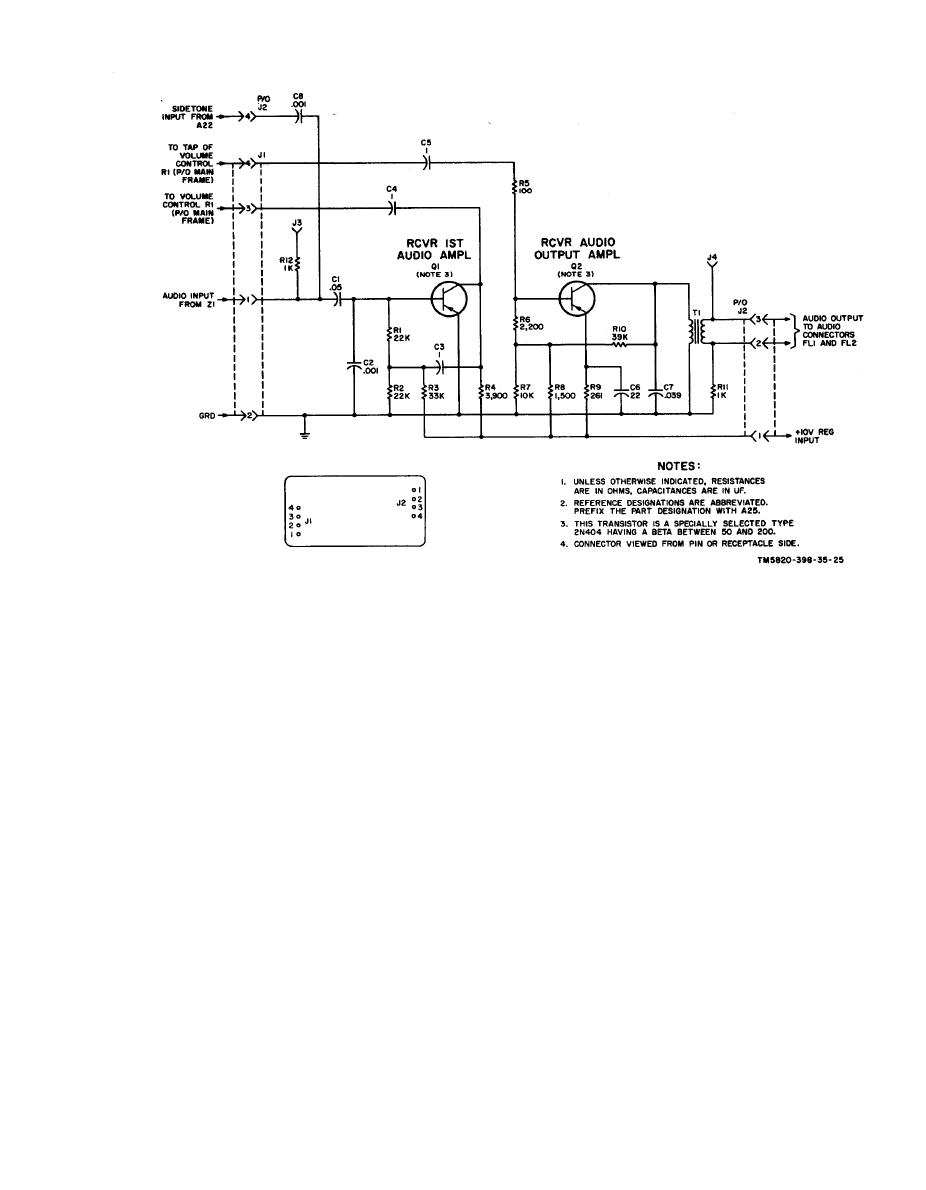 |
|||
|
|
|||
|
Page Title:
Figure 4. Receiver audio amplifier module A25, schematic diagram. |
|
||
| ||||||||||
|
|  emitter of Q1. If the received audio signal
lower Q2 have a common emitter resistor,
is modulated by a 150-cps tone, minimum
R6. Transistor Q2 operates near satura-
degenerative signal is applied to the base
tion. Audio input signals from the audio
of Q2. This action reduces the gain of Q1
amplifier module are applied through iso-
at all frequencies except 150-cps. The bias
lation resistor R2, attenuated by dropping
applied to the base of Q2 is determined
resistor R3, and are applied, through coup-
only by the voltage divider consisting of
ling capacitor C2 to input amplifier Q1.
resistors R9 and R13; transistor Q2 will
The audio output signals from Q1 are de-
conduct and effectively cut off Q1 by virtue
veloped across collector load resistor R7
of common emitter coupling across R6.
and directly coupled to the base of squelch
As a result, the bias applied to the base of
feedback amplifier Q3. The audio signals
Q3 through the voltage divider, consisting
amplified by transistor Q3 are developed
of resistors R8 and R7 and thermistor RT1,
across a frequency selective (twin T) net-
is sufficient to cut off this stage.
work which acts as the collector load. Re-
b. When the 150-cps tone is present with
sistors R10 and R11 and capacitor C 5 form
the incoming signal, the collector output of
one T; capacitors C 3 and C4, and resistor
feedback amplifier Q3, a 150-cps tone sig-
R12 form the other. This network is com-
nal only, is filtered by the combination of
parable to an antiresonant circuit; it ap-
resistor R16 and capacitor C8 and is ap-
plies minimum signal voltage to the base
plied through coupling capacitor C7 to the
of transistor Q2 at the frequency of 150
base of amplifier-detector Q4. With no sig-
cps, and maximum signal voltage at other
nal input, the base of transistor Q4 is at
frequencies. The signal applied to the base
ground potential. Only the positive half
of Q2 is degenerative to the signal at the
13
|
|
Privacy Statement - Press Release - Copyright Information. - Contact Us |